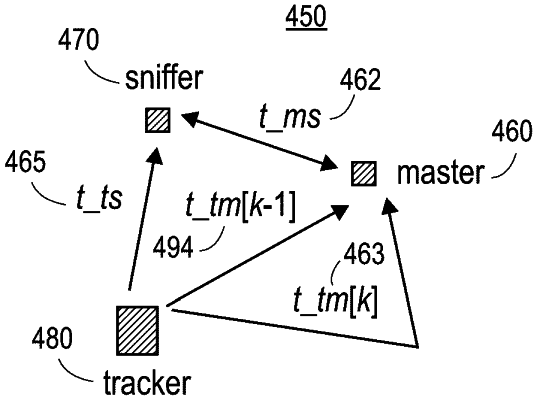| CPC H04W 4/029 (2018.02) [H04W 56/001 (2013.01); H04W 64/00 (2013.01)] | 20 Claims |

|
1. An asynchronous wireless system for localization of nodes in a wireless network architecture, comprising:
first wireless node and a second wireless nodes each:
having a known location; and
including a wireless device with one or more processing units and radio frequency circuitry for transmitting and receiving communications in the wireless network architecture; and
a third wireless node and a fifth wireless node each:
having an unknown location; and
including a wireless device with radio frequency circuitry to enable communications with the first wireless node and the second wireless node in the wireless network architecture; and
wherein the first wireless node is configured to:
receive a first communication from the third wireless node;
determine time difference of arrival of the first communication at the first wireless node and the second wireless node;
identify a relative or absolute position of the third wireless node based on the time difference of arrival;
send a second communication with a synchronization packet to the second wireless node; and
synchronize the first wireless node and the second wireless node based on the second communication to identify a time difference between a first clock of the first wireless node and a second clock of the second wireless node, the synchronization of the first wireless node and the second wireless node being independent and decoupled from the first communication; and
receive packets from the third wireless node and the fifth wireless node in parallel via a first radio frequency channel and a second radio frequency channel, the first radio frequency channel relaying signals from the third wireless node and the second radio frequency channel relaying signal from the fifth wireless node.
|